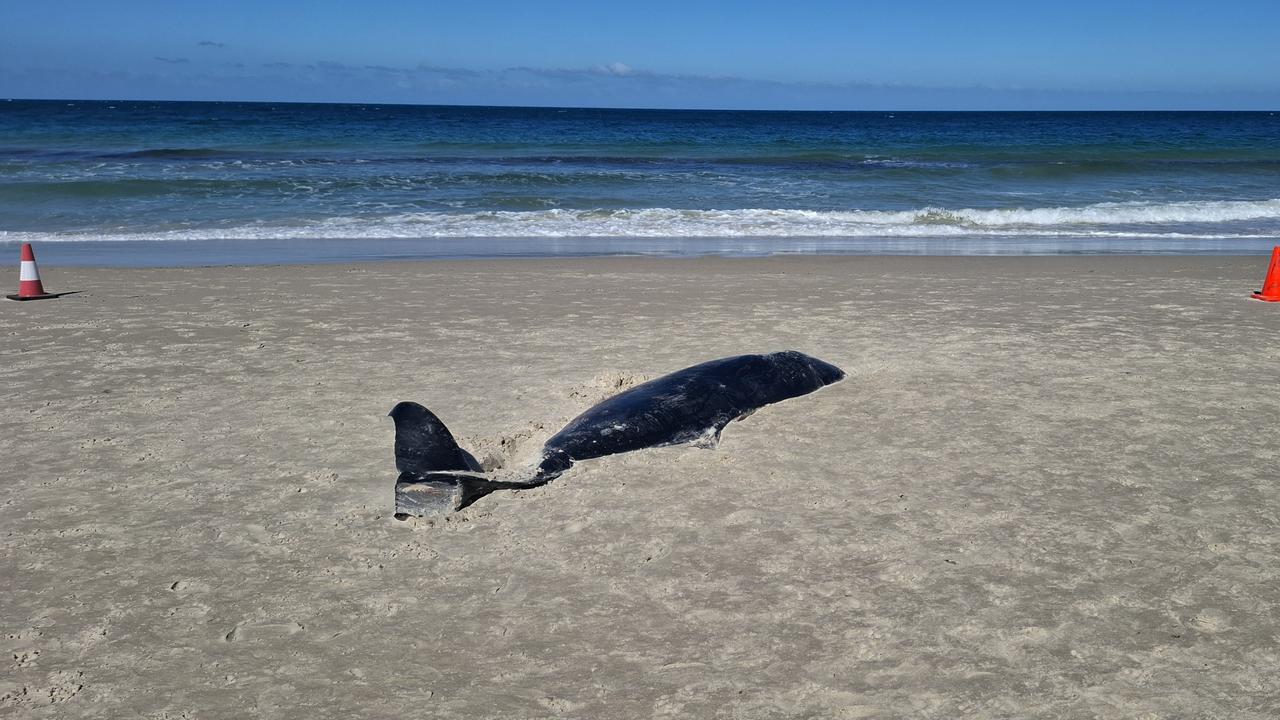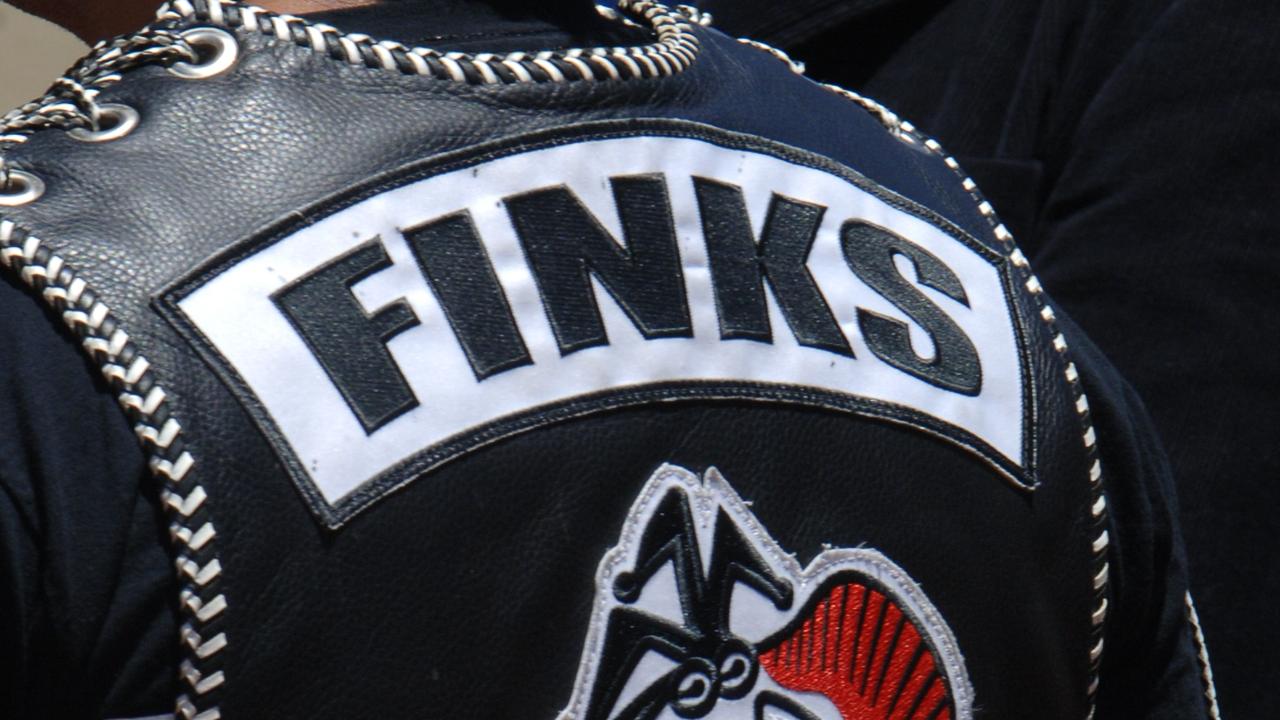BAE Systems boss Craig Lockhart hits out at attitude, approach and delays to defence shipbuilding projects
The man driving Adelaide’s build of nine $45bn Hunter-class frigates says we have to stop second guessing and simply commit to projects that’ll deliver huge benefits for Australia.
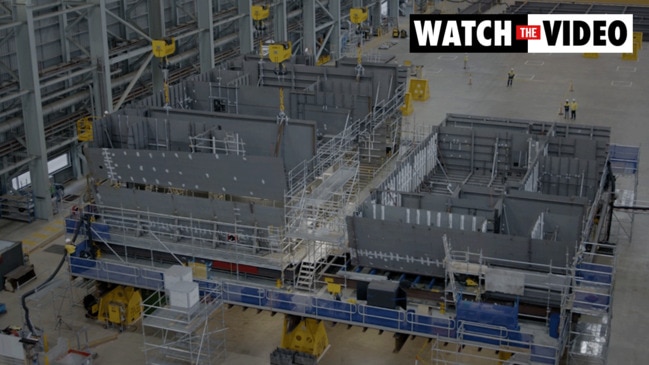
SA News
Don't miss out on the headlines from SA News. Followed categories will be added to My News.
It’s a massive shed.
It has to be. Its function is to hold more or less an entire Hunter-class frigate. And they are about 150m long and 21m wide.
The first Hunter won’t hit the high seas until 2031, but the first parts of the ship are lying on the shed floor, waiting to be moulded, welded, blasted and painted into seagoing shape.
At this stage, the ship is no more than these rectangular sheets of metal. But they all carry the same inscription HCF1 – Hunter Class Frigate 1.
They will become what are known as units. There are four units to a block and the Hunter will be made up of 76 blocks. Two blocks should be completed by the end of the year.
Surveying the scene is Craig Lockhart. His title is managing director of BAE Systems Maritime.
It means he is responsible for a program which, at the moment, is expected to cost around $45bn and include nine frigates.
“Hunter will be the best frigate out there,” Lockhart says confidently.
And he doesn’t want to end there. If all goes to plan, BAE is also likely to end up building Australia’s nuclear submarine fleet in the same Osborne shipyard, sometime next decade.
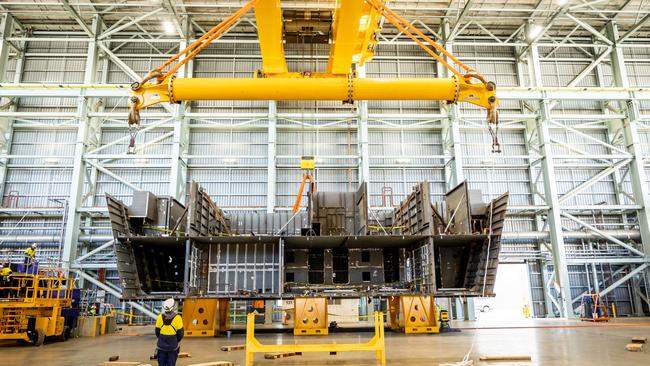
TWO STEPS FORWARD, ONE STEP BACK
It should be pointed out that not everyone shares Lockhart’s enthusiasm for the Hunter.
Even before a weld has been completed, there are calls from some who want the program to be either scrapped or scaled back.
The federal government is currently conducting a “surface review” of Australia’s naval fleet that will report in the early part of next year and will determine the exact scope of the program and whether it will remain at nine ships or cut back to six or even three.
The 56-year-old Lockhart has extensive experience in the global defence industry.
The Scotsman has worked in defence for most of his life but admits frustration with the Australian approach.
He says that far too often Australia makes a decision, spends years second-guessing that approach, changes course, then is forced to start the process all over again.
Think of how many different options were thrown up to replace the ageing Collins Class submarines.
A decade ago there was the plan to buy them from Japan. That was scrapped in favour of an Adelaide-built French design. Then that was chucked out in favour of the new AUKUS alliance, buying US-made nuclear submarines and transitioning into building our own.
In the meantime, several decades and many billions of dollars have been lost.

“I think it continues to just be judged in the media differently to how other, modern Five Eyes partners judge the importance of their defence programs,” Lockhart says, referring to Australia’s allied forces of UK, US, New Zealand and Canada.
“They don’t tend to kind of debate them publicly on the front pages of the paper, where Australia does.
“We’ve not even built the first Hunter, yet we’re thinking again whether it’s the right thing to do? No, we’ve got to commit and keep going through.”
Not that he thinks programs such as his should be beyond scrutiny. It’s just his take is that these decisions are generally thoroughly researched and considered before they are made, so the constant chopping and changing isn’t helping the cause of defending the nation.
“You know, I get it, it’s big taxpayers’ accountability. But we tend to kind of change our minds a lot. Roll forward on to Hunter and it’s almost as if we keep repeating the journey,” Lockhart says.
And then, he says, we downplay and even forget the successes that do come along.
Lockhart places the Adelaide-built air warfare destroyers in this category. It was a program, he says, that had a rough start but ships two and three were “excellent” and are now the “mainstay” of the fleet.
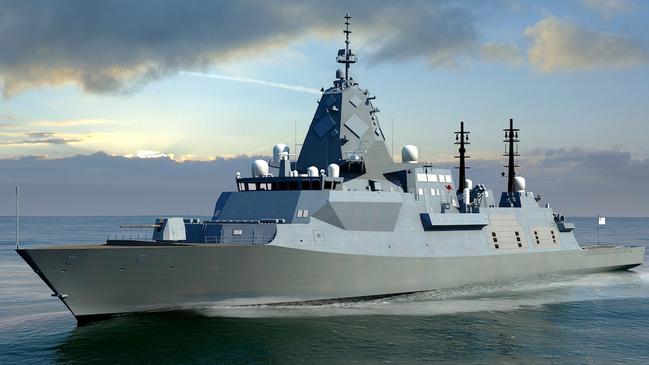
THE EARLY YEARS
Lockhart has spent his career in and around the defence and nuclear industries.
He was born in the small Scottish mining village of Cowdenbeath, 35km north of Edinburgh. His father Ian worked as a maintenance engineer in the mines before moving into hospitals. His mother Isabell was a production director for a textile company.
Like any Scottish kid he loved his football, and he was good enough to play semi-professional, but when he left school in the mid-1980s he decided he wanted to pursue a career in defence.
Lockhart says his decision was heavily influenced by Britain’s war with Argentina over the Falkland Islands in 1982.
“Watching these pictures live on TV, we’d amassed the largest task force of naval ships and commandeered civilian ships and cruise liners and put in flight decks on them, and we’re sending them to the other side of the world,” he says.
But it wasn’t the Royal Navy that first attracted him. It was the Royal Air Force.
He applied and was accepted as a pilot navigator but the next intake was not for 12 months. Not wanting to wait around, Lockhart joined the Ministry of Defence. He was 17.
When the time came to join the RAF a year later, Lockhart decided to stay with the MOD as a technician apprentice.
He was put through a fast-track program that took in various elements of the organisation before emerging as a technician grade one, “which was the very lowest rung of management”.
His first job was in the nuclear program. He had done some nuclear training as part of the apprenticeship but was then sent to the Royal Naval College in Greenwich to study a masters in nuclear reactor design. This, he says, was basically a course in “driving a nuclear reactor”.
The purpose of the course was to equip civilians to take control of a nuclear submarine when it came into the dockyard.
The submarine reactor would come in “hot” and Lockhart was part of a group “cooling it down” for maintenance.
“As a civilian, I had to be trained the same standard as a naval officer to be able to control, operate and be part of that team that operated the reactor,” he says.
“It was just a massive kind of life-changing experience to go through that, and it was probably an affirmation of why I joined the MOD in the first place.”

That training took around seven years, which also gives an indication of just how swiftly Australia must now move to prepare for the start of its own nuclear industry even before the first submarine is built.
After the subs, Lockhart moved around. He spent time helping write regulations for the civil nuclear industry.
Working for Babcock & Brown he became nuclear safety director at the Faslane naval base in Scotland, which had been “commercialised” and housed the UK’s nuclear submarines.
Then in 2006 he became managing director of civil nuclear and part of the job included decommissioning nuclear power plants.
Then it was back to Faslane as MD before taking his first job in Australia in 2010.
That was to assess whether Babcock & Brown should sell off a company it had recently bought that was involved in the Collins submarine program.
Lockhart’s recommendation was not to wind down in Australia but to expand.
The company then asked him if he wanted to manage that idea. It was a big step. Lockhart was managing more than 6000 people in the UK. In Adelaide it would be about 20.
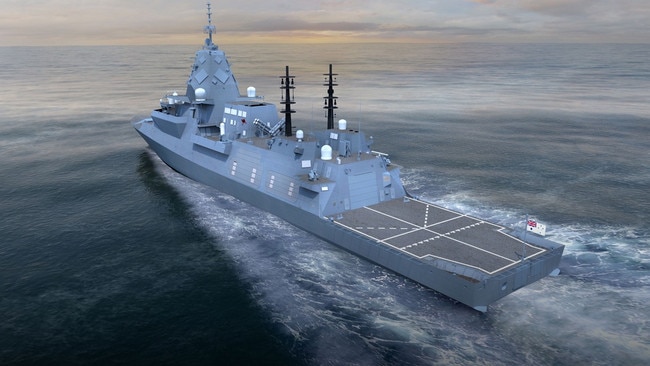
WELCOME TO ADELAIDE
Lockhart says there was no sense that moving to Adelaide was a backward career step.
He uses phrases such as “career diversity” and the benefit of “doing different things” to explain.
“One should never measure themselves by the size of the organisation you’ve got, it’s about what you are delivering,” he says.
It was a choice he again faced 10 years later. Lockhart returned to the UK in 2016, leaving his wife Susan and children Eva and Rohan in South Australia. The kids were in Year 9 and Year 12 and “I thought I can’t move them again, we’ve moved every three years”.
It meant the family would do the long-distance commute for a while. Which wasn’t always easy for Lockhart.
He had returned to become managing director of Babcock International, where he ran a number of naval bases including Devonport in England which was home to 10 attack class nuclear submarines.
But he had to apply to the government for permission to leave the country.
“When you’re kind of responsible for moving nuclear fuel around and the deterrent program, they never want you that far away,” he says.
Lockhart says the family “toughed it out” for three years before the opportunity at Osborne came up.
Again, from the outside, it looks like Lockhart was taking a step “off-Broadway”. Moving from the centre stage to the wings. Swapping a workforce of 10,000 for one of 200.
But Lockhart says his thinking centred on the opportunity to create something almost from scratch.

As we walk through the big Hunter shed, Lockhart bubbles with enthusiasm.
Lockhart says, in a “world first”, they have built a digital twin of the Hunter and the shipyard which allows them to track each piece of the ship and to monitor workloads at individual stations.
Then there is the machine welders that are so precise that they will save more than 100 tonnes of metal.
Of how a new transporter can move a block of the ship in 70 minutes into the next shed – a process that would have taken three weeks when the air warfare destroyers were being built. That, eventually, instead of ships spending months in dry dock for maintenance, an iPad will be plugged into the system which will be able to read the health of every component in the ship and identify what needs to be replaced.
But he also talks with enthusiasm about the workforce. How they are being trained in the new technology, how he hopes they are building a long-term career that will keep them in the shipyard for decades to come.
“The ship’s important and the ship’s the outcome, but it’s really about what we’re setting up for Australia,” he says.
In Lockhart’s eyes that means setting up a long-term sustainable shipbuilding industry in Australia. No more valleys of death.
One of the conditions demanded by the federal government is that, over the program, 60 per cent of the Hunter will include Australian content.
He says ship one is already more than 70 per cent, but that big items such as gas turbines and some of the specialised steel will have to be imported. But the idea is that, eventually, Australia will have a stand-alone sovereign industry.

AHEAD OF THE GAME IN SOME AREAS … BEHIND IN OTHERS
Lockhart also says the Hunter program is well on the way to recovering from its 18-month delay when construction was paused because more work had to be done on what he terms a “design that wasn’t mature enough”.
“We’re now seeing that was the right decision to do and we’ve caught up 13 months, but the quality of what we are producing is exceptional,” he says.
The rate of job growth at Osborne is also likely to be exceptional. Lockhart predicts the site will need another 1000 tradies, on top of the current 200, by 2026. If the AUKUS nuclear deal comes off, that may add another 5000 to the workforce.
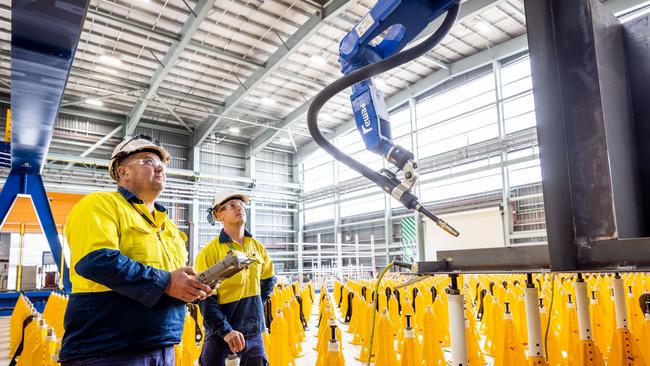
But Lockhart admits to an ongoing “chronic unease” about how he will find all the workers he needs.
BAE has partnered with the state government in various programs aimed at encouraging schoolchildren into trades and developing STEM (science, technology, engineering, maths) skills and also with universities, but says more must be done.
Lockhart says the federal government must make defence jobs a “national priority”.
He says state governments must stop fighting each other to win bits of the pie and work together in the national interest.
“Let’s look at defence as a national agenda, let’s channel our investment very carefully rather than have all the states compete,” he says.
With SA and WA as manufacturing hubs, he says, Victoria could be home to systems engineering, while Sydney could offer logistics support. He also says there is no time to waste.
“My worry is we’re going to take another two years to come up with the operating model (to produce skilled workers),” he says.
“We’ve got a limited dollar, we’ve got a very limited workforce, but we really have a significant kind of challenge and limited time.”
There is also the complexity of training a nuclear workforce from scratch. He estimates Australia will need around 400 people with “deep nuclear qualifications” and it will take 10 years to train them.
More Coverage
Originally published as BAE Systems boss Craig Lockhart hits out at attitude, approach and delays to defence shipbuilding projects




